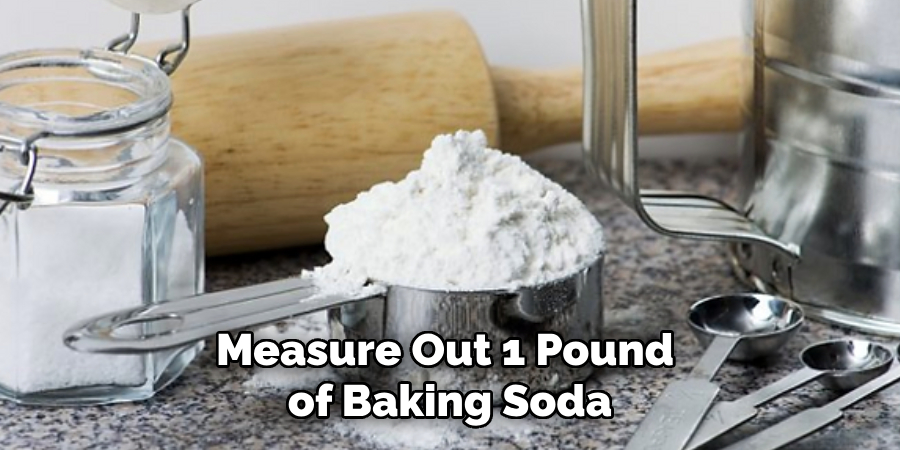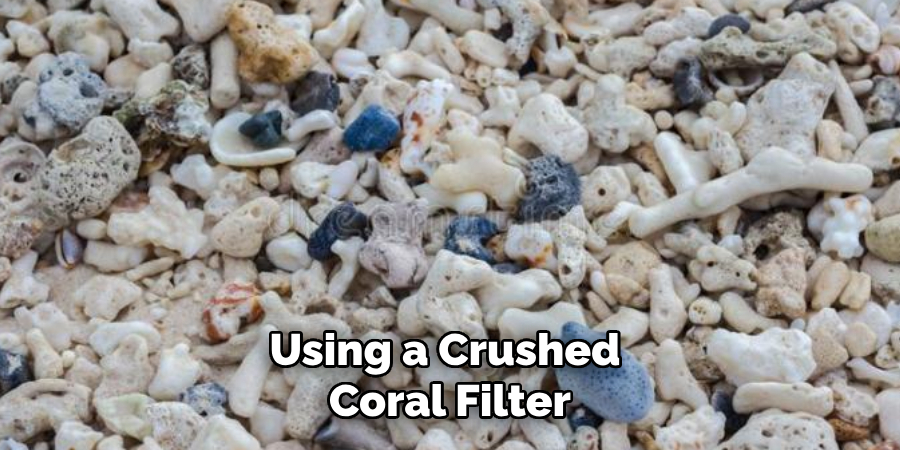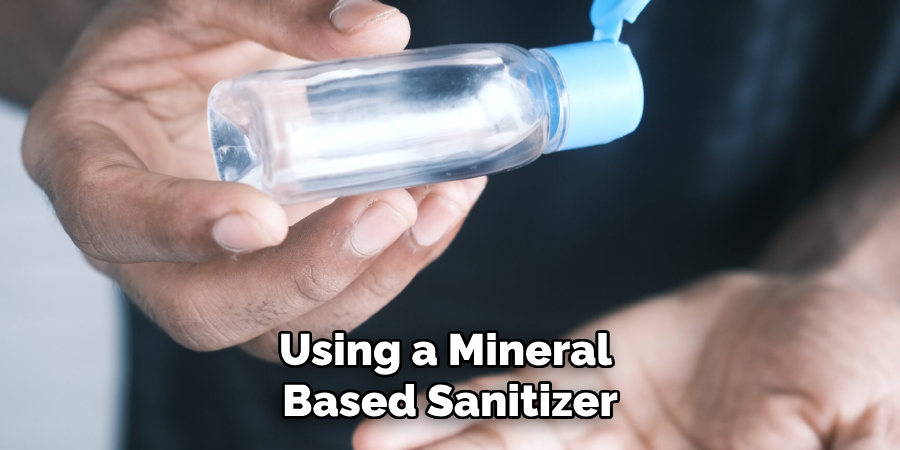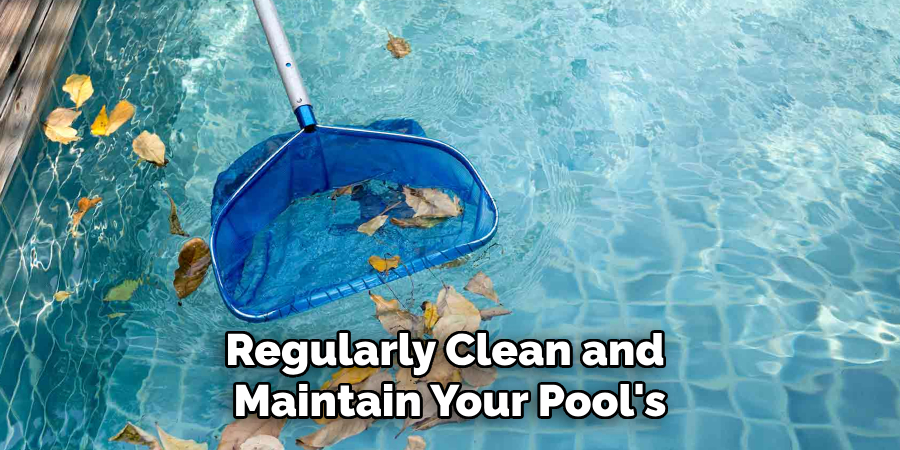Summer is the perfect time to cool off by taking a dip in your own above-ground pool. But having a dreamy backyard oasis requires work and vigilance on the part of its owner, especially when it comes to keeping pH levels balanced.

It can feel daunting, but luckily there are several simple ways you can monitor and raise pH levels in your above-ground pool without too much extra effort or hard-to-find resources.
In this article, we’ll provide helpful tips and tricks on how to raise ph in above ground pool— so you can relax and enjoy lapping up the sunshine just like any other summer day!
9 Best Ways on How to Raise Ph in Above Ground Pool
1. Use a Test Kit to Monitor pH Levels:
The first thing you should do before taking any action is to test the pH levels in your pool. You can easily buy a test kit from any local pool supply store or online retailer. Dip the test strip into the water and compare its color to the chart provided with the kit. If the reading shows a lower-than-normal pH level (7.2-7.6 is ideal), you’ll need to take action to raise it.
2. Add Baking Soda:
If your pH level is below the ideal range, simply adding baking soda can help raise it. Baking soda (sodium bicarbonate) is a common household product that acts as a natural pH balancer. To use, measure out 1 pound of baking soda for every 10,000 gallons of water in your pool. Slowly pour it into the water, focusing on areas with low circulation or near return jets. Re-test after 4 hours and add more if needed.

3. Use Soda Ash:
Soda ash (sodium carbonate) is another commonly used pH increaser for swimming pools. It has a higher pH than baking soda, so you’ll need to use less of it to raise your pool’s pH level. Measure out 6 ounces of soda ash per 10,000 gallons of water and add it to the pool in the same manner as baking soda. Be sure to wear gloves when handling soda ash as it can irritate skin.
4. Aerate Your Pool:
Oftentimes, low pH levels in above-ground pools are caused by low alkalinity levels. By increasing the amount of air circulating through your pool, you can help raise both pH and alkalinity levels.
To aerate your pool, simply turn on your water jets or use a fountain or waterfall feature if available. This method may take longer to show results, so be patient and continue testing until desired levels are reached.
5. Use a Pool Stabilizer:
Pool stabilizers or cyanuric acid can also help increase pH levels in your above-ground pool. This product is often used to protect chlorine from being broken down by the sun’s UV rays.
However, it can also act as a pH buffer. Follow product instructions carefully when using pool stabilizer and be sure to test water levels before adding more, as too much can cause cloudy water.
6. Crushed Coral Filter:
An unconventional but effective method of raising pH levels in your above-ground pool is by using a crushed coral filter. Thisnatural mineral contains calcium carbonate, which can help neutralize acidic water. Simply place the crushed coral in a filter bag and hang it in your pool’s skimmer. It will gradually dissolve over time and raise pH levels.

7. Use Liquid Chlorine:
Another method to increase pH levels in above-ground pools is by using liquid chlorine or sodium hypochlorite.
This common pool sanitizer also has a high pH level, making it an effective way to raise your pool’s levels. However, be cautious when using liquid chlorine as it can cause skin and eye irritation. Follow product instructions carefully and wear protective gear when handling.
8. Use Borax:
Borax (sodium borate) is another household product that can help raise pH levels in your above-ground pool. It is also used as a natural cleaner and laundry booster. Measure out 1.5 pounds of borax for every 10,000 gallons of water and add it to the pool like you would baking soda or soda ash.
Borax also contains buffering agents that help prevent pH fluctuations, making it a great long-term solution.
9. Consult a Professional:
If your above-ground pool’s pH level is consistently low and you’re having trouble raising it with these DIY methods, it may be time to call in the experts. Pool professionals have access to specialized equipment and knowledge to help balance your pool’s pH levels effectively.
They can also provide recommendations for long-term solutions such as installing a salt water system or using a mineral-based sanitizer.
Following these tips and regularly testing your pool’s pH levels will help ensure that you can enjoy crystal-clear water in your above-ground pool all summer long. Now go ahead, dive in, and beat the heat!

Additional Tips and Tricks to Raise P in Above Ground Pool
1. If you have a small pool, consider using soda ash (also known as sodium carbonate) to raise the pH level. It’s inexpensive and works effectively in small doses.
2. You can also use baking soda (sodium bicarbonate) to raise the pH level in your pool. However, be careful not to add too much at once as it can cause cloudiness in the water.
3. Another natural way to raise the pH level in your pool is by using crushed coral or limestone as a filter media. These materials slowly dissolve and release calcium carbonate, which helps increase the pH level.
4. If you have a large pool, consider using liquid or granular pH increaser products that are specifically designed for above-ground pools. Follow the instructions carefully and avoid adding too much at once.
5. Regularly test the pH level of your pool using a reliable testing kit. This will help you keep track of the pH levels and take necessary actions to raise it when needed.
6. Always try to maintain the ideal pH level of 7.4-7.6 in your above-ground pool for optimal swimmer comfort and to prevent damage to pool equipment.
7. Keep an eye on other factors that can affect the pH level in your pool, such as rainfall, heavy bather load, and the use of chemical products like algaecides or chlorine shock treatments.
8. If you notice persistent low pH levels even after using these tips, consult a professional for a more thorough analysis and treatment plan.
9. Avoid adding large amounts of chemicals at once, as this can cause imbalances and make it more difficult to adjust the pH level in the long run.
10. Regularly clean and maintain your pool’s filter and pump to ensure proper circulation and filtration, which can also help balance the pH level.

Following these additional tips and tricks can help you effectively raise the pH level in your above-ground pool and maintain a clean, safe, and enjoyable swimming experience for you and your family. Remember to always handle chemicals with caution and follow safety instructions provided by the manufacturer. With proper maintenance, your pool’s pH level should stay within the desired range, keeping your pool water clear and balanced. Happy swimming!
Frequently Asked Questions
What is Ph and Why is It Important for Pool Maintenance?
pH is a measure of how acidic or basic a substance is, and it ranges from 0 to 14. In swimming pools, the ideal pH range is between 7.2 to 7.8, with 7.4 being considered as the optimal level. Maintaining the right pH level is crucial for pool maintenance because it affects various factors such as water clarity, comfort of swimmers, and effectiveness of sanitizers.
How Often Should I Test My Pool’s Ph Level?
It is recommended to test your pool’s pH level at least twice a week if it is frequently used, and once a week if it is not used as often. However, factors such as weather, bather load, and the use of chemicals can also affect pH levels, so it is important to regularly check the pH level and make adjustments accordingly.
Are There Any Natural Ways to Raise Ph in My Pool?
Yes, there are some natural ways to raise the pH in your pool, such as using baking soda or borax. However, these methods may not be as effective and precise as using chemical products specifically designed for maintaining pH levels in pools.
Is It Possible to Have Too High of a Ph Level in My Pool?
Yes, having an excessively high pH level (above 7.8) can also cause problems in your pool, such as cloudiness and scaling. To lower the pH level, you can use a pH decrease, also known as sodium bisulfate or muriatic acid. Again, make sure to follow the product instructions carefully.
What Happens if I Don’t Maintain the Right Ph Level in My Pool?
Failure to maintain the correct pH level in your pool can lead to various issues, such as algae growth, skin and eye irritation for swimmers, and reduced effectiveness of sanitizers. It can also cause damage to pool equipment and surfaces over time.
Conclusion
All in all, knowing how to raise ph in above ground pool is crucial for maintaining a clean, safe, and enjoyable swimming experience.
Regularly testing and adjusting the pH level of your pool will not only keep it looking sparkling but also ensure the health and comfort of swimmers. With the right knowledge and tools, maintaining the pH level in your above-ground pool can be easily manageable. Remember to always handle chemicals with caution and consult a professional if you encounter persistent issues with your pool’s pH levels. Happy swimming!
About
Outdoor Fixes is a distinguished figure in the world of Diy design, with a decade of expertise creating innovative and sustainable Diy solutions.
His professional focus lies in merging traditional craftsmanship with modern manufacturing techniques,
fostering designs that are both practical and environmentally conscious. As the author of diy,
outdoorfixes delves into the art and science of outdoorfixes-making, inspiring artisans and industry professionals alike.
Education RMIT University
(Melbourne, Australia) Associate Degree in Design (Outdoor Fixes) Focus on sustainable design, industry-driven projects,
and practical craftsmanship. Gained hands-on experience with traditional and digital manufacturing tools, such as CAD and CNC software.
Nottingham Trent University
(United Kingdom) Bachelor’s in outdoorfixes.com and Product Design (Honors) Specialized in product design with a focus on blending creativity with production
techniques. Participated in industry projects, working with companies like John Lewis and Vitsoe to gain real-world insights.
Publications and Impact
In diy, Outdoor Fixes his insights on indoor design processes, materials, and strategies for efficient production.
His writing bridges the gap between artisan knowledge and modern industry needs, making it a must-read for both budding designers and seasoned professionals.

